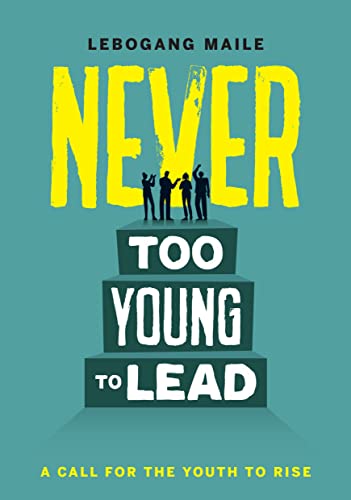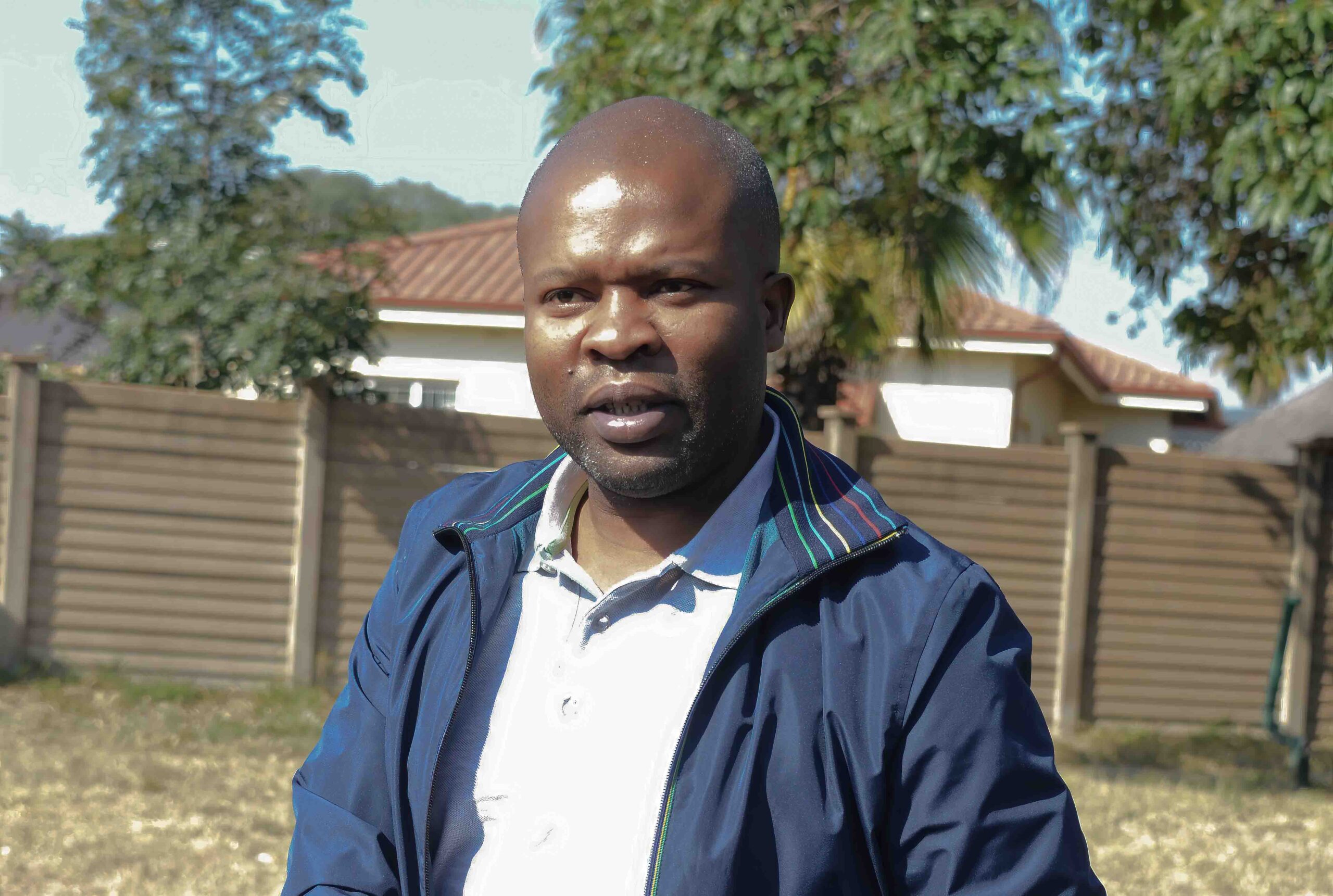The following excerpt from Lebogang Maile’s Never Too Young To Lead is from the chapter, A Demographic Dividend
Within a couple of weeks of the ANC-led alliance winning the first democratic elections in 1994, Nelson Mandela assembled his maiden government, under the guise of a Government of National Unity (GNU). Looking back, it is notable how young his cabinet members were, in relative terms. Though at 75, Mandela was the oldest among them and the only one above the age of 70, his youngest minister was Tito Mboweni, who became Labour Minister at the age of 35. Following closely behind him was Trevor Manuel, who was 37 when he was appointed to that government. Ten of the 24 ministers in that first executive were in their 50s; nine were in their 60s. Their combined average age was 55.
That was something quite remarkable, given that, for obvious reasons, none of the ANC-led appointees to the GNU had any experience in public office, let alone running a government. They were not groomed in executive management. Many of them had also been in exile for a number of years and were unfamiliar with the country they had fought to free. Forget about expertise in balance sheets and big numbers, board rooms, project management, tiers of executives and all else that goes with state or senior office: these were men and women recently returned from the front lines appointed to various portfolios to lead South Africa into the democratic dispensation. Despite being so inexperienced and grossly underqualified and young, very young in comparison to their National Party peers who were heading towards the exit doors, they were entrusted with that very delicate and critical task of leading a complex country in a transition from a brutal and inhumane regime to a democratic society. No one ever suggested they were perhaps too young to lead. In fact, it was the ANC leadership that was daring enough then to grant its own young men and women such opportunities. Granted, they had little choice: the bulk of the second-tier leadership of the ANC were young at that time but at no time was there a push to conform to international standards and staff the executive with aging comrades.
Fast forward 28 years and the picture is remarkable different. At the time of writing this book, there were 30 men and women comprising Cyril Ramaphosa’s cabinet, himself included. Two thirds (21) were over the age of 60 and three of them were over the age of 70 (Nkosazana Dlamini-Zuma, Pravin Gordhan and Patricia de Lille). The average age of the cabinet in 2022 was 60. The youngest minister–and the only one in their 30s–was Ronald Lamola (Minister of Justice and Constitutional Reform) who was 38 at the time this book was published. It was a much older cabinet from that of 1994, by a very long stretch. Government is not alone in cautiously and mistakenly erring on the side of age, though. Consider school principals, for example. How young, or old, is the person heading the school where your child or relatives are educated? Or universities: how close to retirement age are the majority of vice chancellors you can call to mind? What about the age profiles of the Constitutional Court bench of judges? Look at the profile of the chief justice, both past and present. We had an opportunity in 2022 when electing the country’s new chief justice to inject some young blood into the bench but we rowed back into familiar terrain on that front. What are the age profiles of the company where you work? What is the average age of its Exco team? Pretty aged, is my safe guess.

While corporate South Africa, as well as parts of the legal fraternity, are showing some positive moves when it comes to embracing young, or at least younger, leaders, it is generally the exception to a norm that continues to lean towards a chronologically vertical leadership structure that automatically gives way to an older crop of leaders. In the meanwhile, South Africa’s population is becoming younger. In the absence of the 2022 census being to hand, the most recently available statistics suggest our population sits at just shy of 60 million, of which approximately one third are between the ages of 18 and 34. Some call it a ‘youth bulge’. Others more optimistically refer to it as a ‘demographic dividend’, but if it is, we are not necessarily profiting from it and we are most certainly not seeing our youth in the driving seats. It begs the obvious question of relevance: are our youth appropriately represented? Are our leaders sufficiently in tune to design a society for the millions of youth they lead? More pertinent still, at what age or life stage is one considered ready and able to lead? Or is it ephebiphobia that’s at play here, that Greek term for the fear of youth? One would hope not.
Call it a ‘bulge’ or call it a ‘dividend’, or whatever else you see fit, our young members of society are so large in number that a failure on our part to reap the benefit they present would be catastrophic. As flagged above, one in every three among us is between the ages of 18 and 34; that is a statistic that any industrialized or developed nation would beg to boast. Take Japan, one of the richest and most developed nations in the world, as a good case in point. In 2020, the Asian country had a population of just over 126 million, about twice that of South Africa’s, but that population is in a fairly steady decline and was down 0.7% from the 2015 census. The challenge Japan faces, however, is not a dwindling population, per se, but an ageing one. The median–or average–Japanese age is 48.4 years, a far cry from South Africa’s 27 years. Germany is another nation in crisis with a median age of 45.7 years. France’s is 42.3 years. Canada’s median age is 41.1 years. Britain’s is 40.4 years. In other words, these economic giants are staring down a retirement crisis where the majority of the active population is nearing pension age and those of them with insufficient capital or savings under their belt to see them through this next chapter of their lives are likely to become a burden on their respective governments when they do, which is feeding a global crisis.
The benefit of a youthful population such as South Africa’s therefore cannot be hammered home enough. The challenge, however, is that in a developing nation such as our own, unemployment is sky high. It is now estimated that every other young man or woman between the ages of 15 and 34 are unemployed or have never known the benefit of holding down a job and earning a wage. South Africa is also home to the regrettable phenomenon of the ‘NEETs’–Neither Employed, Educated or Trained. The stats among that cohort are equally grim with an estimated 17 million–or 44%–between the ages of 15 and 60 falling into that NEET group. It feeds the other grim phenomenon of ‘waithood’, a purgatory that so many young people fall into between childhood and adulthood. It is a term that takes on different connotations but the one most applicable here–and unfortunately across much of Africa–is when a man or woman is no longer in need of childcare but does not have the opportunity or means (such as employment) to advance to adulthood and therefore find themselves stuck in the limbo of so-called waithood. There are arguably hundreds of millions of youth standing idle in ‘waithood’ across Africa, bereft of economic independence, or economic citizenship as some dub it, and without any end in sight. Ironically, education does not necessarily bring a solution to this dilemma, as many of the youth in ‘waithood’ are educated to relatively high levels.
We all know of young men and women who are idling way their best years in this waiting game. There will be many of you reading this book who are financially supporting such youth, either directly or through family members. Do our leaders–in government and in business–fully appreciate the awfulness of waithood? That’s debatable. Are we designing sufficiently innovative programs to lead them out of this limbo? I would also have my doubts. In the previous chapter, Ayakha Melithafa referred to the rigid structure of our education system which, in her view, is not sufficiently relevant to today’s world, and which begs the question could a differently designed curriculum help cut through this waithood. But above and beyond unemployment and poverty, what else defines these Generation Z’s, as they are also known? Or will waithood ultimately define them?
There is a sociological field of study called generational theory, which dates back to the 1920s and which suggests that the generation to which we belong has the potential to influence our values, in much the same way as culture or social class does. Conversely, generational groups tend to share similar traits or characteristics. Though generational theory was traditionally specific to the United States and North America, now that we inhabit a more interconnected and globalized world, the various theories lend themselves well to a loose global fit. Think no further than the so-called millennials and the reams of studies that have been conducted about who they are and how they generally comport. Obviously this approach to understanding generations and intergenerational differences does have evident limitations, and it is not an empirical field of study, but bear with me as I develop my train of thought here.
Tomes have been written about the Baby Boomers, for example, one of the largest generations born to date and who were spawned between the end of World War II and the mid-1960s, a generation that drove economic prosperity in the United States and as a result of which the ‘boomers’ are regarded as an economically influential generation. Generation X came next, the cohort born between 1965 and 1980 and who were often reared in households where both parents worked and were therefore seen as more independent, thought to possess good survival skills and were regarded as well equipped to handle stress and general life challenges. The Millennials, or Generation Y as they are also called and born between 1980 and the mid 1990s, are billed as a confident cohort not afraid to challenge authority, are generally tech savvy and often ambitious and socially mobile. Then came Generation Z (born after 1995), and who are also referred to as Gen Z’s or Zoomers, are often described as ‘digital natives’, young people who are comfortable in their diversity, shrewd in the way they consume and very politically progressive. In South Africa we often refer to this cohort as the ‘born free’s’. We ran out of letters of the alphabet after that, so we decided to call the generation that succeeded the Gen Z’s as the Generation Alpha’s, or Gen Alpha’s, children who were born in the mid-2010’s through to the mid-2020’s, though we know very little about them and they therefore have no attributes or traits ascribed to them, as yet at least. Now consider again the ‘bulge’ of people between the ages of 18 and 35/40 that make-up the South African population and rather than just recall them in numbers, think of them instead as Millennials and Gen Z’s, endowed with all that is progressive and modern. Then just imagine the kind of leaders they would make, given half the chance. Of course, there are plenty of young leaders already doing some outstanding work in South Africa and elsewhere on the continent, but nowhere near as many as there should be.

Quite a few decades ago, in fact more than one hundred years ago, there was a cohort that were referred to as the Greatest Generation, Americans who were born at some time between 1901 and the late 1920s. They lived through the withering Great Depression and many of them later enlisted to fight in World War II. According to generational theory, they were defined by a strong work ethic, faithful commitment, modesty and, above all, being able to take personal responsibility for their surroundings. In South Africa, the Greatest Generation would have included the young men and women who went on to form the ANC Youth League, the youth who believed that much more needed to be done to push back against supreme white power that the conservative leadership was doing at the time. The League was only a few years in existence when apartheid was formally instituted in South Africa the country’s general election of 1948. That morbid and dark project of ‘apartness’ ultimately brought about decades of economic and social unrest, and a racial hierarchy that placed the white person well above blacks, colored and Indians, irrespective of the fact that they were the majority, and more importantly that it was in fact criminal and wrong to govern along racial lines. In the workplace, blacks were therefore excluded from managerial and executive positions. Disenfranchised, they were shut out of political life, at least in any meaningful way. They were physically banned from white-only areas in a country that fostered the view that all things European were positive while all things black were negative. The choked atmosphere that prevailed from 1948 through to 1994 did little to enhance risk taking in life, therefore hampering the development of a black South African entrepreneurial spirit or mindset and all associated entrepreneurial activity. The race-based oppression deeply distorted the perception of oneself and one’s value, making the slow emergence of black leadership in post-apartheid South Africa a useful study in the awakening of psychological freedom…
Lebogang Maile is the author of ‘Never Too Young To Lead’.

